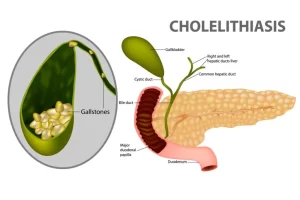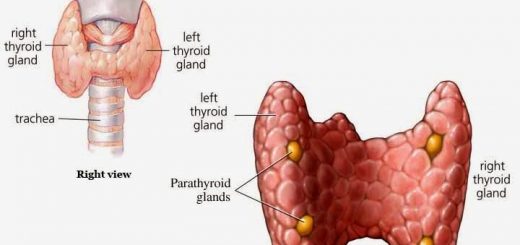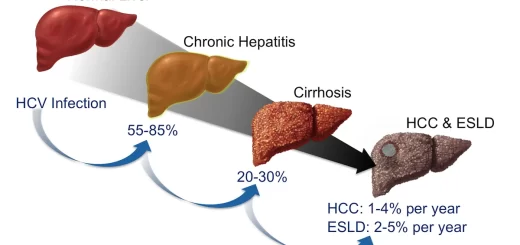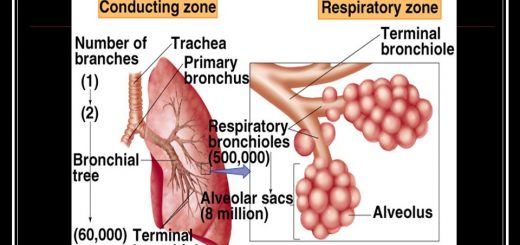Cholecystitis types, causes, symptoms, diagnosis, treatment, and complications of Gall stones
Cholecystitis is a redness and inflammation of the gallbladder, It happens when a digestive juice called bile gets trapped in your gallbladder, The gallbladder is a small organ under your liver, It stores bile which is made in the liver, bile drains out of your gallbladder and into your small intestine, If the bile is blocked, it builds up in your gallbladder, This causes inflammation and can cause infection, cholecystitis can be sudden (acute) or long-term (chronic).
Acute and chronic Cholecystitis
- In 96% of cystic ducts is obstructed.
- Clinical features: Sufferers are often obese, Fertile females over 40 years.
- Pain occurs late at night, in the right hypochondrium epigastric referred to as right shoulder.
- Digestive symptoms: flatulence, nausea vomiting (old name: Fatty dyspepsia).
- Fever on the occurrence of bacterial infection.
Acalculous Cholecystitis
5-10% of acute cholecystitis in adults, 30% in children, Factors associated with critical conditions, after major surgery, multiple injuries, major burns, severe sepsis, mechanical ventilation, Bacterial infection with typhoid bacilli, Actinomycosis, and Parasitic cholecystitis.
Diagnostic tools
- Clinical.
- US & endoscopic ultrasound.
- Cholecystography.
- CT Scan (to all organs related to Gall bladder).
- MRCP & ERCP.
- PTC (percutaneous transhepatic cholangiography).
Differential diagnosis
- Appendicitis.
- Perforated peptic ulcer.
- Intestinal obstruction.
- Pleurisy.
- Myocardial infarction.
Treatment
- First aid Treatment antibiotics, analgesia & antispasmodic
- Surgery.
1. Surgery
- Laparoscopic cholecystectomy for symptomatic stone;
- Expectant for asymptomatic stones; sometimes stone dissolution.
- Most asymptomatic patients decide that the discomfort, expense, and risk of elective surgery are not worth removing an organ that may never cause clinical illness.
- However, if symptoms occur, gallbladder removal (cholecystectomy) is indicated because pain is likely to recur, and serious complications can develop.
- Surgery can be done with an open or laparoscopic technique.
- Cholecystectomy effectively prevents future biliary colic but is less effective for preventing atypical symptoms such as dyspepsia.
- Cholecystectomy does not result in nutritional problems or a need for dietary limitations.
- Some patients develop diarrhea, often because bile salt malabsorption in the ileum is unmasked.
- Prophylactic cholecystectomy in asymptomatic patients with cholelithiasis is not warranted except in those with quite large gallstones (> 3 cm) or those with a calcified gallbladder (porcelain gallbladder) because of an increased risk of gallbladder carcinoma.
Open cholecystectomy
- Which involves a large abdominal incision and direct exploration, is safe and effective.
- Its overall mortality rate is about 0.1% when done electively during a period free of complications.
Laparoscopic (Whipple) cholecystectomy
- It is the treatment of choice.
- Using video endoscopy and instrumentation through small abdominal incisions, the procedure is less invasive than open cholecystectomy.
- The result is a much shorter convalescence, decreased postoperative discomfort, and improved cosmetic results, yet no increase in morbidity or mortality.
- Laparoscopic cholecystectomy is converted to an open procedure in 2 to 5% of patients, usually because biliary anatomy cannot be identified or a complication cannot be managed.
- Older age typically increases the risks of any type of surgery.
Post Cholecystectomy Problems
- Wrong diagnosis.
- Papillary dysfunction, stenosis.
- Psychosomatic disorders.
- IBS.
- Biliary stricture.
- Biliary stones.
- Amputation neuroma.
- Pancreatitis.
2. Stone dissolution (not done nowadays)
For patients who decline surgery or who are at high surgical risk (e.g., because of concomitant medical disorders or advanced age), gallbladder stones can sometimes be dissolved by ingesting bile acids orally for many months.
The best candidates for this treatment are those with small, radiolucent ston (more likely to be composed of cholesterol) in a functioning non-obstructed gallbladder-normal filling on cholescintigraphy or oral cholecystography or absence of stones in the neck.
- Tiny stones: Ursodeoxycholic acid 8 to 10 mg/kg/day PO dissolves 80% of tiny stones < 0.5 cm in diameter within 6 mo.
- Larger stones: For larger stones (the majority), the success rate is much lower, even with higher doses of ursodeoxycholic acid. Further, after successful dissolution, stones recur at 50% within 5 years.
Most patients are thus not candidates and prefer laparoscopic cholecystectomy, Stone fragmentation ( extracorporeal shock wave lithotripsy) to assist stone dissolution and clearance is now unavailable.
Ursodeoxycholic acid, however, has value in preventing stone formation in morbidly obese patients who are losing weight rapidly after bariatric surgery or while on a very low-calorie diet.
Complications
Complications of G stone disease
- Acute cholecystitis, cholangitis, chronic cholecystitis.
- GB cancer.
- Mucocele of the GB.
- Pyocele of the GB.
- Rupture GB.
- Acute Biliary pancreatitis.
- Obstructive jaundice.
- Mirrizzi syndrome (obstruction of the neck by stone).
- Bouveret’s syndrome.
- Gall stone ileus.
Complications and sequelae of Gall stones
In the gallbladder
- Silent gallstones.
- Acute cholecystitis.
- Chronic cholecystitis.
- Gangrene of gall bladder.
- Perforation of the gall bladder.
- Mucocele of gall bladder (Hydrops of gall bladder).
- Empyema of the gall bladder.
- Emphysematous cholecystitis.
- Adenomyomatosis of the gall bladder.
- Cholesterosis of the gall bladder. (Cholesterol crystals in the wall complicated by Ca deposition = porcelain GB).
- Polyposis of gall bladder.
- Cholecystitis glandularis proliferans (Rare).
- Diverticulosis of gall bladder.
- Typhoid gall bladder.
- Carcinoma of gallbladder.
In the bile ducts
- Obstructive jaundice.
- Cholangitis.
- Acute relapsing.
- pancreatitis.
In the intestine
- Gallstone ileus leading to acute intestinal obstruction.
- Bouveret’s syndrome.
You can subscribe to Science Online on YouTube from this link: Science Online
You can download the Science Online application on Google Play from this link: Science Online Apps on Google Play
Vascular Liver Disorders, Causes and risk factors of Budd-Chiari syndrome
Autoimmune Hepatitis symptoms, types, diagnosis, causes and treatment
Primary biliary cirrhosis symptoms, cause, diagnosis, treatment, and Osteoporosis
Diagnosis of the cause of jaundice, Hepatobiliary imaging, treatment of cholestasis and Pruritus
Liver Cholestasis types, causes, features, symptoms, diagnosis, and treatment
Jaundice symptoms, types, cause, treatment and What is the source of bilirubin?
Liver failure, symptoms, stages, cause, treatment, Acute on chronic liver failure (ACLF)
Hepatic Artery Embolization, Importance & risks of Embolization therapy for Liver cancer




